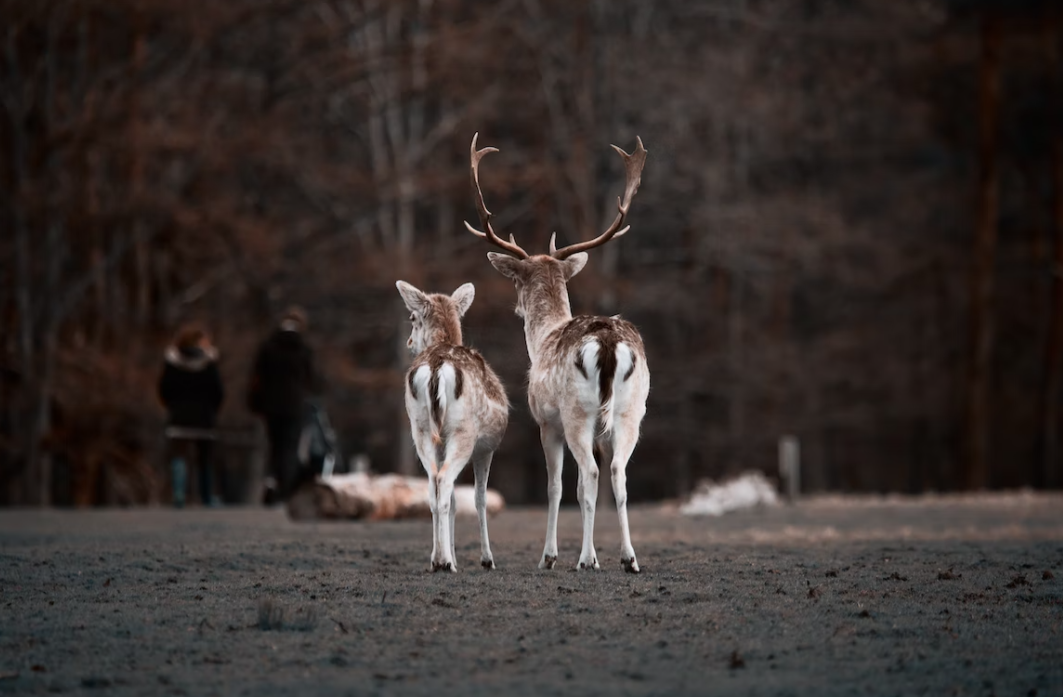‘The Buck in the Snow’ is a stark, beautiful poem about the fragility of life and death. It highlights the ability of death to cross all boundaries and cause loss at even the most tranquil of times.
This post includes a breakdown of the stanzas, an insight into the speaker + voice of the poem, and an exploration of the themes and deeper meanings. It’s is only a quick overview to help you get to grips with the poem; you can access a complete in-depth breakdown of the poem, plus tasks, exercises and essay questions via the links below.
VOCABULARY
- Hemlocks – ancient bushes, associated with dark magic
- Antlered – with antlers
- Buck and doe – male and female deer
- Orchard – a grove of fruit trees
- Scalding – burning
- Attentive – watching, paying attention
STORY/SUMMARY
There is a white sky over the dark hemlock trees, which are bowing down with snow, at the beginning of the evening, didn’t you see the antlered male deer and his female standing in the apple orchard? I saw the, I saw them suddenly go, they had their tails up and they moved with long leaps, lovely and slow, over the stone wall and into the wood of hemlocks trees that were bowed with snow.
Now, the male deer is lying here, his wild blood burning the snow.
What a strange thing death is – it brings the buck in the snow to his knees, and then his antlers hit the ground. The doe is maybe a mile away now, standing under the heavy hemlocks, that shift their snow a little as the moments pass, so that it falls like feathers to the ground. What a strange thing life is, as it looks out and watches from the eyes of the doe.
SPEAKER/VOICE
The speaker is a silent observer, she tells us about a scene that she recently witnessed, in winter between two deer and, presumably, a hunter. The deer are in the apple orchard, but they jump the wall into a grove of hemlocks. The hemlock trees are traditionally symbolic of dark magic. This is a kind of ominous foreshadowing that something bad will happen. The hunter is absent from the poem. In this case, we just see the buck alive one moment, and then dead the next – with his wild blood bleeding into the snowy ground. The speaker’s conversational style is juxtaposed with the seriousness of the event, she finishes by evoking a sense of pathos for the living doe, who runs and then stops to look back where her buck has been killed.
Thanks for reading! You can buy our detailed study guide here if you’re studying this particular poem.
This includes:
- Vocabulary
- Story + Summary
- Speaker + Voice
- Language Feature Analysis
- Form and Structure Analysis
- Context
- Attitudes + Messages
- Themes + Deeper Ideas
- Key Quotations
- Extra tasks / possible essay questions














